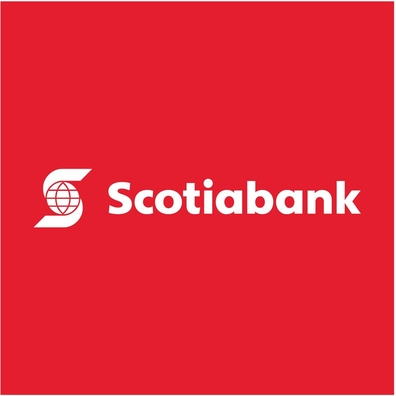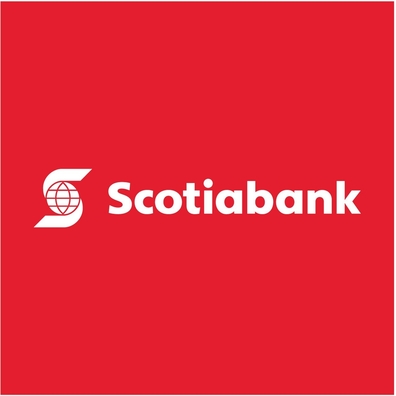Mortgage Rates
- British Columbia Mortgage Rates
- Ontario Mortgage Rates
- Quebec Mortgage Rates
- Alberta Mortgage Rates
- Manitoba Mortgage Rates
- New Brunswick Mortgage Rates
- Newfoundland Mortgage Rates
- Nova Scotia Mortgage Rates
- Nunavut Mortgage Rates
- NWT Mortgage Rates
- PEI Mortgage Rates
- Saskatchewan Mortgage Rates
- Yukon Mortgage Rates
Scotiabank Mortgage Rates
Scotiabank, alternatively referred to as The Bank of Nova Scotia, is the third-largest bank in Canada in terms of market capitalization and deposits. Founded in 1832 in Nova Scotia, Scotiabank moved its offices to Toronto in 1900 and now has over 25 million clients globally. The banking giant refers to itself as "Canada's most international bank" with acquisitions in Europe, Asia, the Caribbean, and Latin America. Scotiabank offers wealth management, investment and corporate banking, and personal and commercial banking services and is also a member of the London Bullion Market Association.
Understanding Scotiabank Mortgage Products
Scotiabank offers a wide array of mortgage products designed to cater to the diverse needs of its clientele. Here's a snapshot of their main offerings:
Fixed-Rate Mortgages
Fixed-rate mortgages provide the certainty of a constant interest rate throughout the term. These are available in closed terms of 1 to 10 years and open terms of 6 months and 1 year.
Variable-Rate Mortgages
With variable-rate mortgages, your interest rate may rise or fall based on market conditions. Scotiabank offers these in closed terms of 3 and 5 years.
The Long and Short Mortgage
This unique product combines a variable and fixed rate, offering the flexibility of a low-interest variable rate and the stability of a longer-term fixed rate.
The Long and Short® Mortgage
Second Home Mortgages
If you're considering buying a second home or an investment property, Scotiabank has you covered with their Secondary Home Financing Program.
Scotiabank StartRight Mortgage Program
This program is designed to cater to the mortgage needs of newly arrived permanent and temporary residents.
Home Equity Lines of Credit (HELOC)
Scotiabank's Total Equity Plan is a Home Equity Line of Credit (HELOC) that lets homeowners access up to 80% of their home equity.
Scotiabank Fixed Rate Mortgages
A fixed rate mortgage involves a stable interest rate that does not fluctuate over the course of the loan’s term. Below are Scotiabank’s current posted rates:
1 year fixed mortgage rate - %
2 year fixed mortgage rate - %
3 year fixed mortgage rate - %
4 year fixed mortgage rate – %
5 year fixed mortgage rate - %
7 year fixed mortgage rate - %
10 year fixed mortgage rate – %
Scotiabank Variable Rate Mortgages
A variable rate mortgage involves an interest rate that fluctuates based on a certain benchmark, usually a prime rate. Below are Scotiabank’s current posted rates:
3 year variable mortgage rate – %
5 year variable mortgage rate - %
Understanding Scotiabank's Prime Rate
Scotiabank's prime rate forms the foundation for its variable-rate lending products. This rate typically fluctuates in sync with the Bank of Canada's overnight rate adjustments, affecting the cost of borrowing for these products.
The Scotia Total Equity Plan (STEP)
The Scotia Total Equity Plan is a flexible multi-product borrowing plan that ties into the value of your home. With STEP, up to 80% of the equity in your home becomes available. In addition, up to 65% can be used towards lines of credit and other secured borrowing options, which are eligible for automatic limit increases as you pay down your mortgage. In order to gain access to STEP, you must make at least a 20% down payment on your new home or have 20% of the home’s value paid off. Applying for STEP can be done online through Scotiabank’s eHOME online application or by contacting an advisor.
Scotiabank Mortgage Break Penalty
If your mortgage is closed, prepayment penalties will likely apply if you attempt to pay part or all of the balance early. Mortgages are a contractual obligation and if you make a payment early, you’re violating the contract which is why you could incur a prepayment penalty. Every bank’s prepayment penalty policy and fee varies.
You can calculate what your prepayment penalty will be using Scotiabank's Mortgage Prepayment Charge Calculator. Even though you might incur a fee, it could still be worth the penalty which is why it’s important to understand the cost.
How to Get a Scotiabank Mortgage Pre-Approval
You can get a mortgage pre-approval with Scotiabank that is valid for 120 days. When you get pre-approved, you will know how much you’re approved for and what interest rate Scotiabank will offer. You can apply for pre-approval online using Scotiabank’s eHOME application or contact a home financing advisor for in-person service. In order to get pre-approved with Scotiabank, you will likely be asked to provide the following information:
- Personal identification, such name, address, date of birth
- Details about the dream home you are looking for, projected cost and down payment
- Employment and income details, such as pay, employer name and address, time and length of employment, and status of employment
- Outstanding obligations, such as credit card, loans or other debts
- Owned assets, such as investments, leisure vehicles, real estate or other valuables
Keep in mind that Scotiabank will assess your financial health while reviewing the above information. This includes assessing your credit score. Do what you can to improve your financial position before applying for a mortgage pre-approval with Scotiabank to better your odds of approval.
How to Get a Scotiabank Mortgage
If you have applied for Scotiabank pre-approval through their eHOME application, applying for a mortgage is the following step once you have a signed offer of purchase. You can also bypass the mortgage pre-approval process if you’re ready to purchase a home now. Scotiabank has streamlined mortgage applications to this online service, with requested documents submitted through a secure vault. Customers would only have to meet in person with their lawyers to sign documents and receive the keys to their new home.
If you’re ready to apply for a Scotiabank mortgage, be prepared to provide the following documentation:
- Two pieces of government issued identification
- Employment verification, such as recent pay stubs, notices of assessment from the CRA or letters of employment
- Confirmation of income, such as recent pay stubs or bank statements
- Proof of the down payment funds
- The property listing for the home you’d like to purchase
- A signed offer of purchase
When applying for a Scotiabank mortgage, the bank will definitely review your credit score and report as well. Do what you can to improve your credit and financial position before applying to better your odds of approval.
Using Scotiabank Mortgage Specialists
Scotiabank has a number of specialists you can consult, including home financing advisors. The institution understands that the mortgage process is overwhelming which is why they offer personalized advice and support. You can meet with them at a time and place that works for you, including over the phone or connecting through email.
Scotiabank Pros
- Big bank. Scotiabank is one of the five largest banks in Canada. Getting approved with them can be validating and confirm that you made a good financial decision. In addition, you’ll have access to their customer service network and other products and services.
- Streamlined application process. Using Scotiabank’s eHOME online application means you can apply entirely online from the comfort of your home.
- Pre-approval opportunities. Mortgage pre-approval comes with a ton of benefits. Scotiabank allows you to get pre-approved and the offer is valid for up to 120 days.
- Tied in mortgage and borrowing options. Scotiabank’s STEP plan gives clients access to money for the things they need with streamlined payment-to-credit options.
Scotiabank Cons
- Lack of eHOME and home financing advisor integration. If you work with Scotiabank for your mortgage, you must either apply online or with a specialist. There is a lack of integration between these services. While there is a call-line for eHOME applicants, not having full integration may impose some difficulties.
- Harder to qualify. As with all big banks, it is challenging to get approved with Scotiabank because of their strict approval requirements.
- New to Canada. You may not qualify for a mortgage with Scotiabank if you just emigrated to Canada.
The Importance of Comparing Mortgage Rates
It's crucial to compare mortgage rates between various lenders to secure the most beneficial product. While Scotiabank's mortgage rates are competitive, they might not always be the best fit for every borrower. By comparing rates from different lenders, you can find a mortgage product that best suits your financial situation.
Frequently Asked Questions about Scotiabank Mortgage Rates
What is Scotiabank's prime rate? Scotiabank’s prime rate is 7.2%.
Are Scotiabank Mortgage Rates negotiable? Yes, you can negotiate for a lower rate. Your chances of success depend on your credit score, financial situation, and negotiation skills.
Special Mortgage Rates
Special mortgage rates are the rates normally offered online or in advertisements as a limited time deal. They are not limited time deals or special in any way. They are lower than posted rates and generally what mortgage specialists can outright offer clients. However, smaller lenders and credit unions generally offer more competitive rates than the big banks’ special rates. Seeking out comparable loans and their rates can put you in a position to ask for even better rates than what big banks offer you as “special”.
Discretionary rates are the good deals big banks can offer, but won’t openly tell clients about or advertise publicly. Banks will offer these rates to preferred clients, because they don’t want to lose their business. Ultimately, banks want business and any client, preferred or not, can negotiate rates down into the discretionary category.

